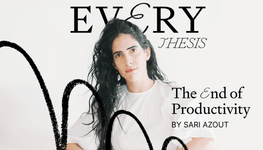In a world where we can outsource productivity to technology, the people who reap the biggest rewards aren’t those who work the fastest.
They’re the people who make things that are wonderful, original, weird, emotionally resonant, and authentic. As our feeds become flooded with instant, AI-generated content, the most dangerous thing you can do is... See more

